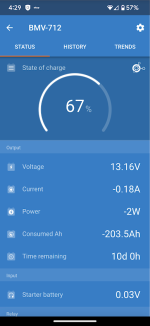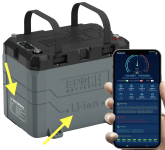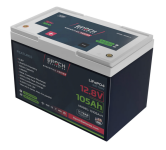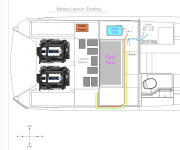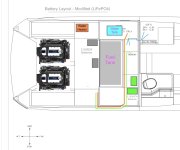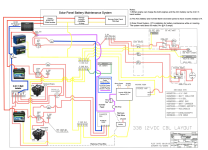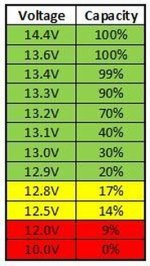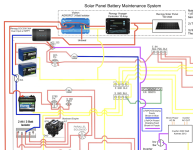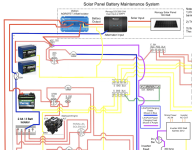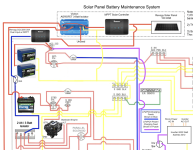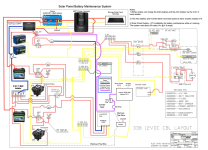The alternator output has very little ripple...50mV is typical. The DC to DC converter does not care about that. It also doesn't need a battery to dampen voltage. Many DC to DC converters are driven straight off alternators. However, it needs to be a smart alternator to be used without a battery.
Also curious...why do you show a renogy voyager solar controller and the renogy combo MPPT/DCtoDC. Please tell me you aren't feeding the output of the Voyager controller to the Renogy MPPT through that Victron battery isolator. Looks like you have one solar panel driving a cheap PWM solar controller which is then driving an MPPT....that won't work for a variety of reasons.
Out of curiosity, how big are your alternators? Just so you know, if I was using a 50A Dc to DC converter, I would make sure I had at least a 100A alternator. That's the beauty of the Victron DC to DC...you can adjust the input or output current.
Your Pronautic 1230P is a 3 bank charger yet one of the banks will be LiFePO4. I don't think you can designate different chemistry on one of the banks. You may need a separate charger for the lithium batteries unless you run the same charge profile on the lithium as AGM. The big problem is that you never want to have equalization on with lithium batteries. It will trigger the OVP in the battery BMS and knock them offline...probably when you don't want it to happen.
Thank you for the continued comments. Very helpful.
I won't tell you that I am feeding the MPPT through the Voyager controller . . . since it has not happened yet.

I am trying to re-use as much of the OEM components and wiring, since it may open a can of worms, if I change too many things.
As for the solar panel, it currently charges the 3 battery banks. I designed it to be more of a maintenance system than a re-charging system, since the engines can certainly do the re-charging. The boat sits on a mooring and when we use the boat, we are usually anchored at the sandbar for 4-6 hours or until the beer runs out.
I could run the DC/MPPT charger in parallel with the voyager, if that will remedy the issue of running through 2 controllers in series to charge the LiFePO. So, the Voyager/ArgoFET combo can do just the AGM batteries and the DC-DC/MPPT can to do the LiFePO4 batteries.
In my experience the 100 watt solar panel puts out about 60 watts as indicated by the Voyager controller. I could do a panel upgrade to 150 or 200 watts, if needed.
I was planning on using the liFePO charging profile on the ProNautic, since most of its 'work' will be to charge the LiFePO bank while at a slip on shore power for overnights, etc. I'll have to do a little bit or research into 'equalization'

I believe the alternators are old-school and about 70 amp rating. That is why I was planning on a 30amp DC-DC converter so as not to take too much from the alternators is a peak load situation. since the alternators are old-school, I believe I should do the 'Option 2' (connect at the battery) for stability.
I'll be making a few more changes to the design. . . .




















